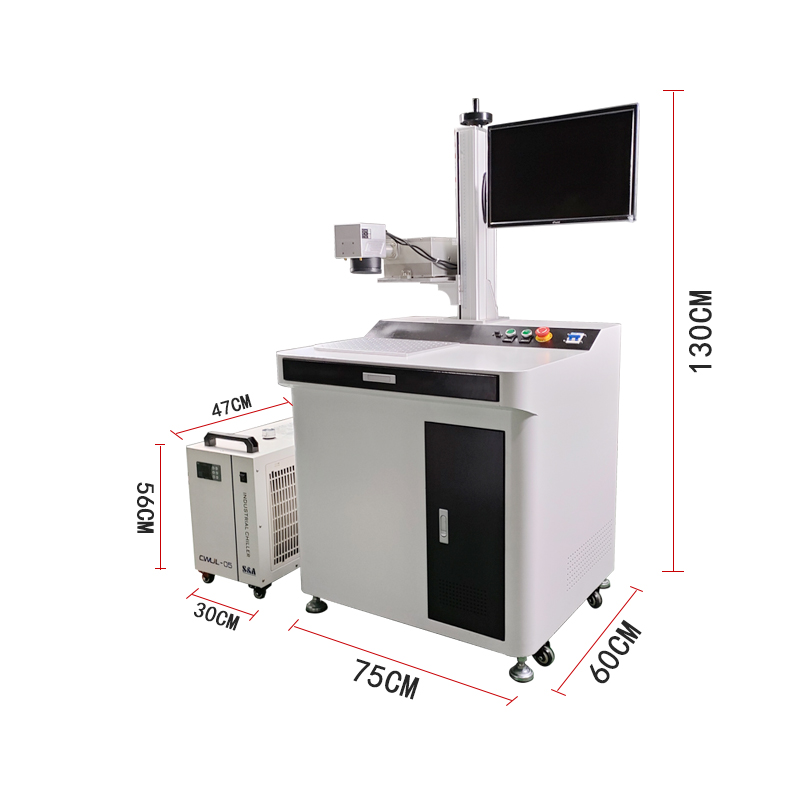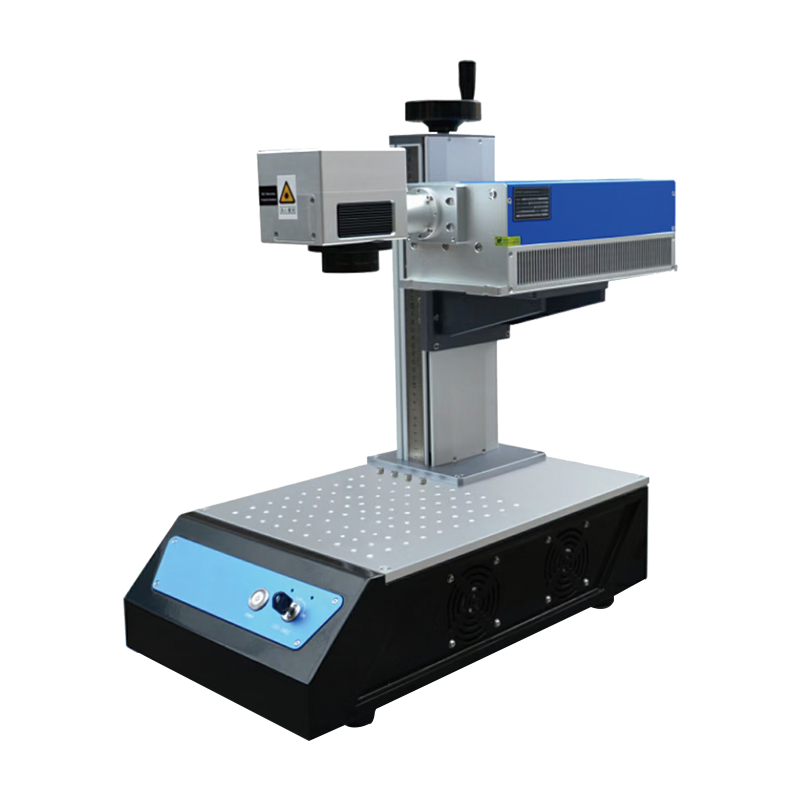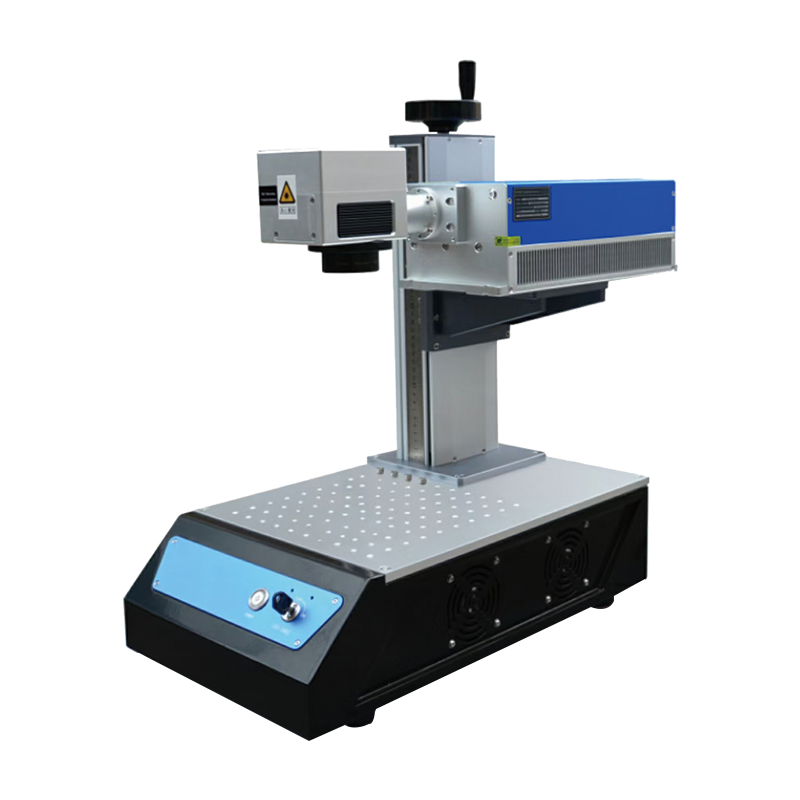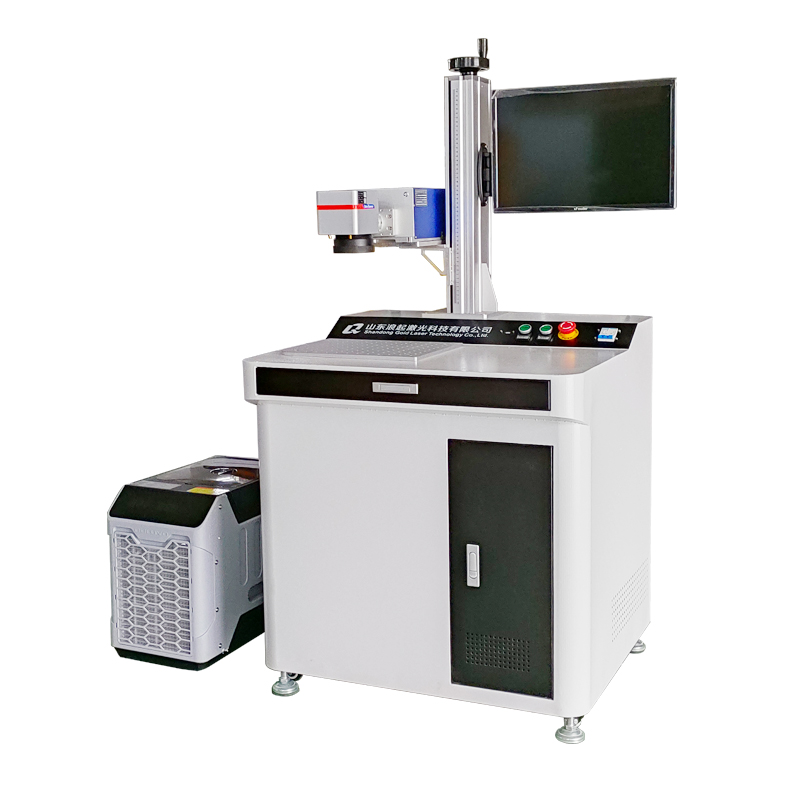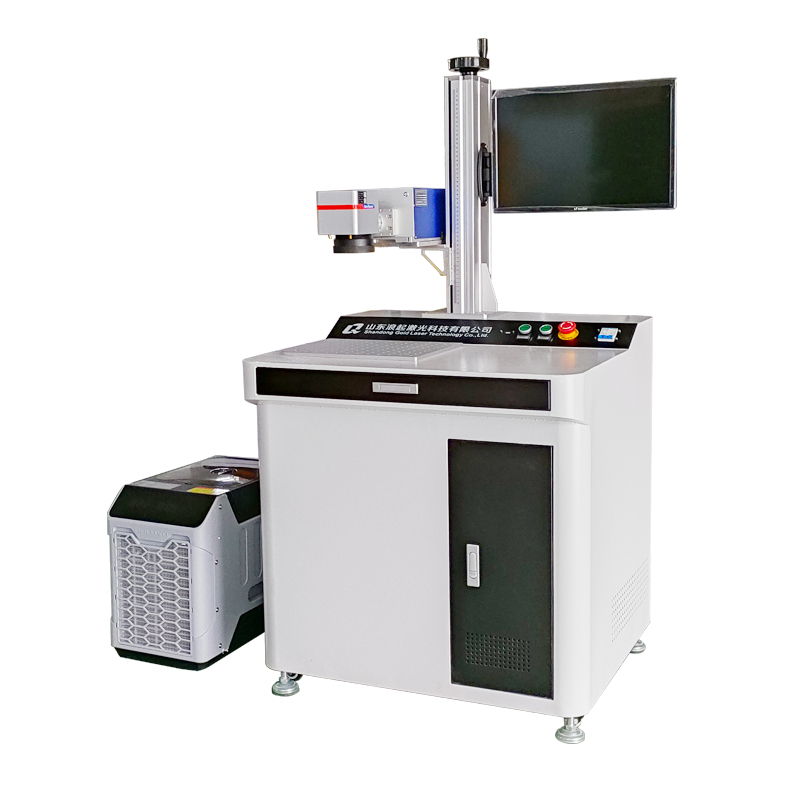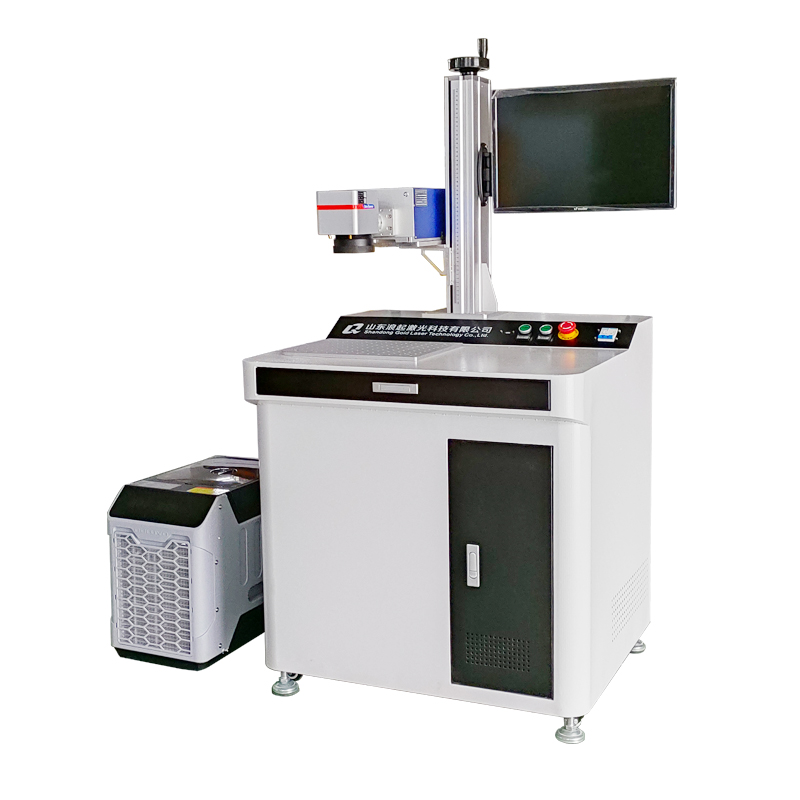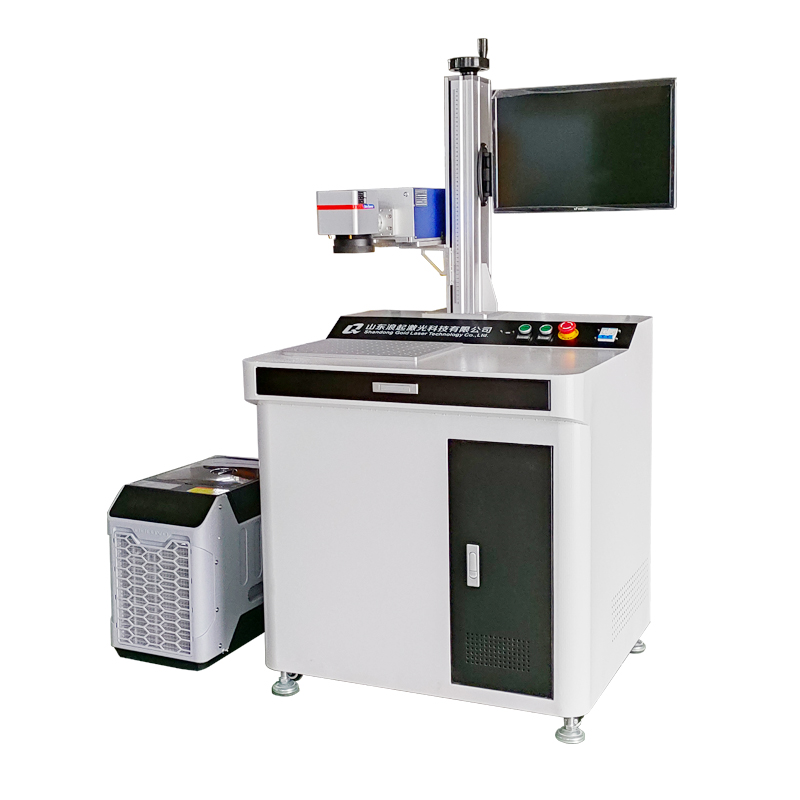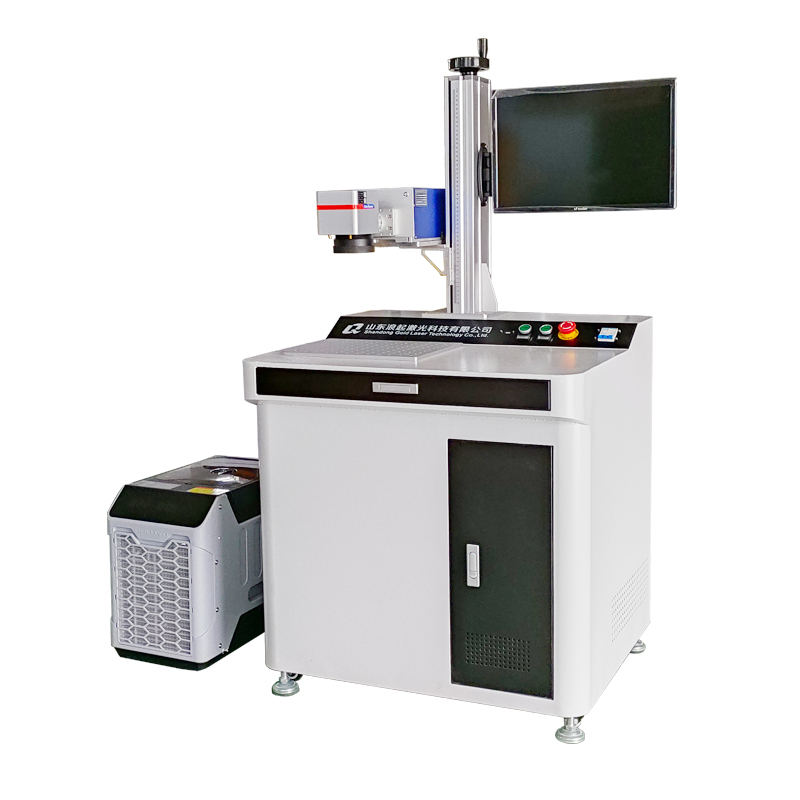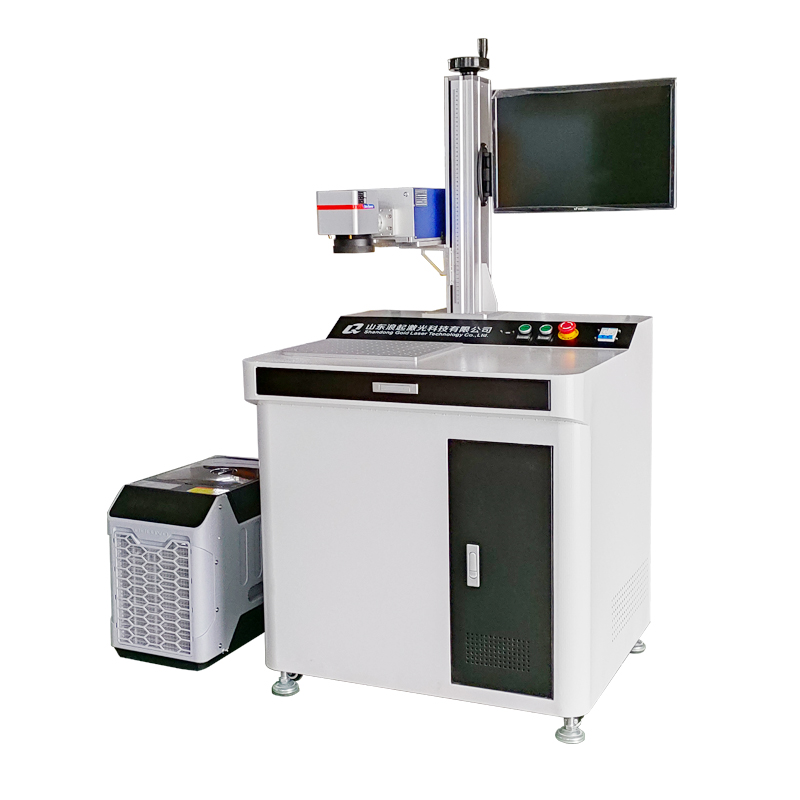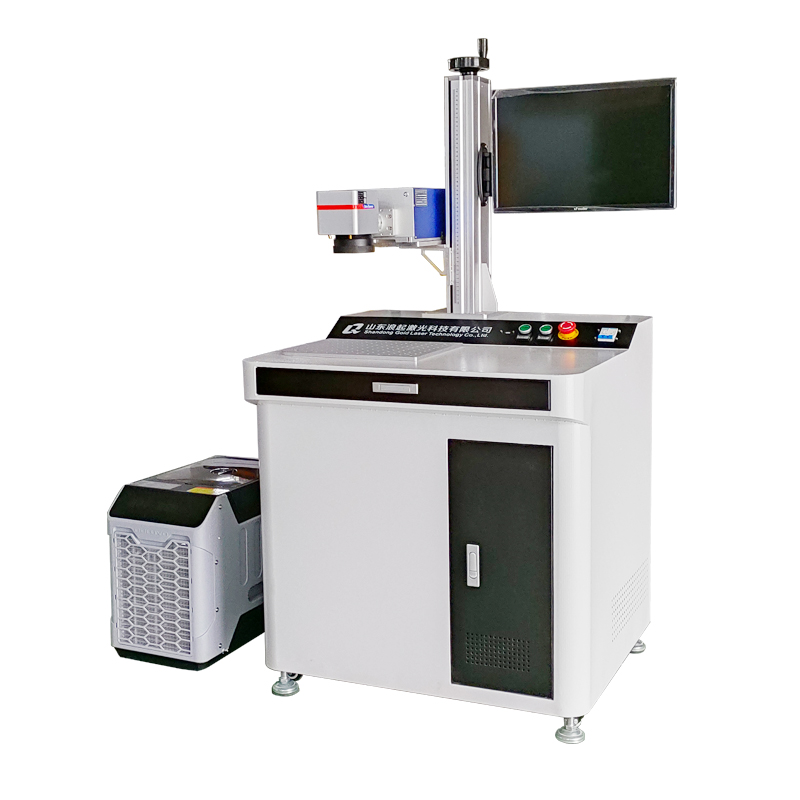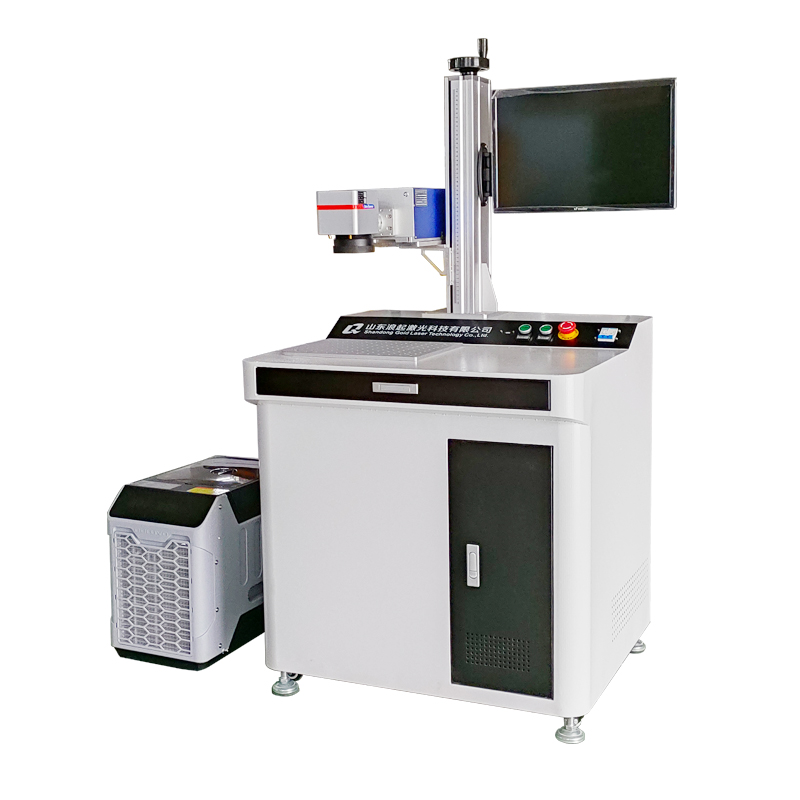Fiber laser marking and UV laser marking machines are both used for precision marking, but they differ significantly in terms of wavelength, material compatibility, marking mechanism, and applications. Here’s a detailed comparison:
1. Laser Wavelength & Source
Fiber Laser Marking:
Wavelength: 1064 nm (infrared, near-IR range)
Laser Source: Fiber-optic laser (rare-earth-doped optical fiber)
Pulse Duration: Nanosecond (ns) or picosecond (ps) for high-speed marking
UV Laser Marking:
Wavelength: 355 nm (ultraviolet range)
Laser Source: Third-harmonic generation (from an Nd:YAG or Nd:YVO₄ laser)
Pulse Duration: Nanosecond (ns) or femtosecond (fs) for cold marking
2. Material Compatibility
Fiber Laser Marking:
Best for metals (steel, aluminum, titanium, copper) and some hard plastics.
Works well with anodized aluminum, coated metals, and some ceramics.
Less effective on transparent/reflective materials.
UV Laser Marking:
Ideal for plastics, glass, silicone, PCB, and sensitive materials.
Excellent for high-precision marking on heat-sensitive materials (e.g., medical devices, electronics).
Can mark transparent/reflective materials (e.g., PET, polycarbonate) without thermal damage.
3. Marking Mechanism
Fiber Laser:
Thermal process – Uses heat to engrave or change surface properties (e.g., annealing, deep engraving).
Can produce dark/black marks on metals via oxidation.
UV Laser:
Cold marking – Uses photochemical ablation (breaks molecular bonds without heat).
Produces high-contrast, clean marks without burning or melting.
4. Applications
| Fiber Laser Marking | UV Laser Marking |
|---|---|
| ✔ Metal engraving (serial numbers, barcodes) | ✔ Micro-marking on plastics & glass |
| ✔ Automotive parts (VIN, QR codes) | ✔ Electronics (PCB, semiconductor marking) |
| ✔ Tooling & industrial parts | ✔ Medical devices (surgical tools, implants) |
| ✔ Jewelry engraving | ✔ Packaging (food, pharmaceuticals) |
5. Advantages & Limitations
| Factor | Fiber Laser | UV Laser |
|---|---|---|
| Speed | Faster on metals | Slower but more precise |
| Precision | Good (~20-50µm) | Excellent (~10-20µm) |
| Heat Effect | Can cause thermal stress | Minimal heat-affected zone (HAZ) |
| Cost | Lower initial cost | Higher due to complex optics |
| Maintenance | Low maintenance | Requires more upkeep (optics sensitivity) |
Conclusion: Which One to Choose?
Choose Fiber Laser if you need high-speed, durable marking on metals.
Choose UV Laser if you work with plastics, glass, or sensitive materials requiring no thermal damage.


